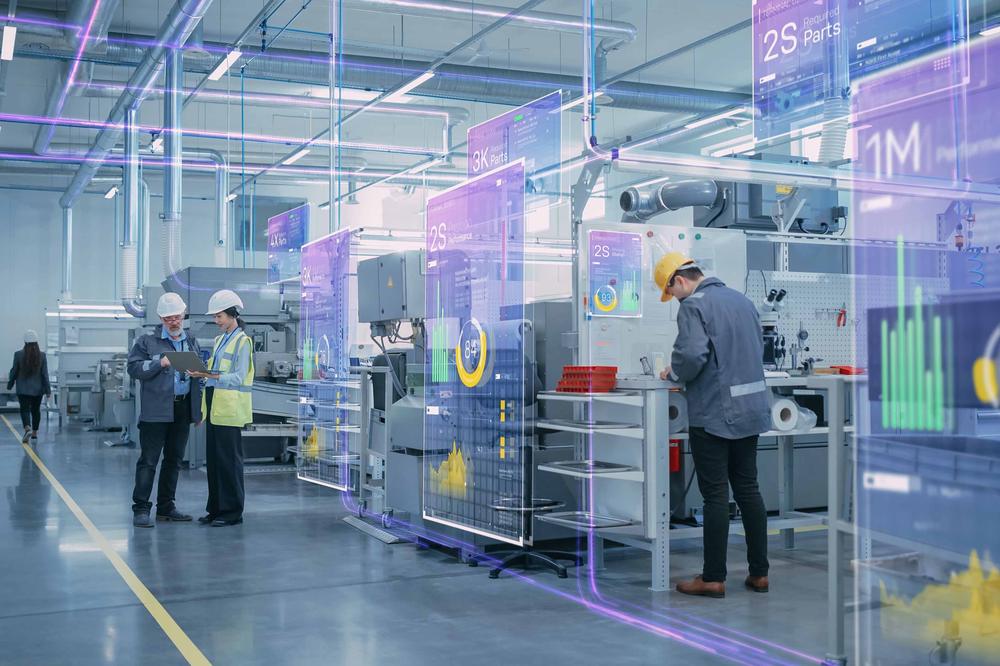
The B2B platform for the best purchasing descision. Identify and compare relevant B2B manufacturers, suppliers and retailers
Close
Filter
Result configuration
Continents
Select continent
Locations
Result types
Company type
Select company type
Industries
Select industry
Company status
Select company status preset
Number of employees
Min.
Max.
Founding year
IT Automation AS
Bergen, Norway
A
1-10 Employees
2019
Key takeaway
The company specializes in software test automation, providing comprehensive services that streamline QA outsourcing and enhance the automation process. They develop scripts to ensure software functions as intended and deliver detailed documentation, prioritizing quality and customer support throughout the project lifecycle.
Reference
Service
Services – IT Automation
MCPM
Oslo, Norway
A
11-50 Employees
2007
Key takeaway
MCPM specializes in providing comprehensive automation software solutions for production and manufacturing environments, enhancing quality and maximizing efficiency. Their specialized product portfolio includes plant automation and process control, aligning with the trends of Industry 4.0 and smart technology integration.
Reference
Product
Automation Software - MCPM - Scandinavia, Asia, Russia & Middle East
Our following offered software solution can work with all leading control and SCADA system vendors. Dreamreport, Itris, Atvise, Transpara, Parsec, Mobatec
SS Automation AS
Hamar, Norway
A
11-50 Employees
2014
Key takeaway
SS Automation is a leading technology enterprise that supplies complete control systems for various industrial applications, including those in the asphalt industry, using PLC (Programmable Logic Controller) and PC technology. Their commitment to 24/7 customer service further enhances their offerings in automation solutions.
Reference
Core business
SS Automation
SS Automation AS is a leading technology enterprise, supplying complete control systems to various manufacturing companies, based on PLC and PC.
Looking for more accurate results?
Find the right companies for free by entering your custom query!
25M+ companies
250M+ products
Free to use
RPA Supervisor
Bergen, Norway
A
- Employees
-
Key takeaway
The company highlights its leading RPA (Robotic Process Automation) management solution, RPA Supervisor, which enhances the performance and stability of digital workforces. Their focus on continuous improvement and customer satisfaction has positioned them as a key player in the automation software market, driving increased ROI and efficient scaling for organizations.
Reference
Product
Business Intelligence
RPA Supervisor increases utilization, stability and performance of your digital workforce. This reduces cost and increases value creation and customer satisfaction, driving increased ROI and efficient scaling.
Guard
Sandefjord, Norway
A
101-250 Employees
1984
Key takeaway
Guard Automation is a key player in industrial automation, offering a comprehensive range of services including automation engineering, IoT and data analytics, and system integration. Their commitment to sustainable technology and innovative solutions positions them as a vital partner for businesses looking to enhance their automation processes.
Reference
Service
Services - Guard Automation
. Our skilled employees are ready to fulfill your needs A holistic approach to automation supplies We offer a wide range of industrial services including automation engineering, IoT and data analytics, IT engineering, consulting, electrical engineering, control panel assembly, and electrical installation. Our team of highly skilled and educated engineers and technicians are experts […]
Rocketfarm AS
Sogndal, Norway
A
11-50 Employees
2008
Key takeaway
Rocketfarm specializes in industrial automation, offering innovative solutions that enhance robotic palletizing through their certified Pally URcap software. This software is designed to meet unique palletizing needs and facilitates seamless integration with Universal Robots, streamlining project verification and accelerating sales processes.
Reference
Core business
Rocketfarm | UR+ Software Experts | Palletizing | OPC UA
Software experts for Universal Robots. Rocketfarm develops URCaps for Universal Robots.
Ecco it AS
Stavanger, Norway
A
11-50 Employees
2011
Key takeaway
The company specializes in industrial automation, focusing on increasing efficiency and reducing resource use through advanced control systems and information technologies. Their commitment to standardized and open technologies ensures flexibility and supports the digitalization efforts of enterprises seeking to enhance their competitive advantage.
Reference
Core business
Frontpage - ecco it
Industrial automation is our business
Globus.ai
Sandnes, Norway
A
11-50 Employees
2017
Key takeaway
Globus.ai is a leading provider of AI-powered staffing software that enhances workflow automation and integrates seamlessly with existing ATS and CRM systems, ultimately making recruiters significantly more efficient. Their innovative solutions and commitment to transforming staffing management invite recruiters to embrace a new era of recruitment.
Reference
Core business
AI Staffing Software To Place More Candidates
Don't miss any job orders & place more candidates with Globus.ai staffing software. We are making recruiters 10x more efficient.

Itis IT Industrial Solutions AS
Bærum, Norway
A
1-10 Employees
2003
Key takeaway
The company has extensive experience in providing Alarm/Event and OPC software applications, particularly for industrial process-related industries, highlighting its expertise in automation software solutions.
Reference
Core business
Home | ITIS AS
Kaupno
Oslo, Norway
A
11-50 Employees
-
Key takeaway
KAUPNO is a leading Sales Automation System that significantly enhances sales conversion and prospect handling through advanced features, algorithms, and AI. By automating the sales process and providing a virtual sales assistant, KAUPNO allows sellers to focus on closing deals rather than managing unresponsive prospects.
Reference
Core business
KAUPNO :: Sales Automation & CRM
Technologies which have been searched by others and may be interesting for you:
A selection of suitable products and services provided by verified companies according to your search.
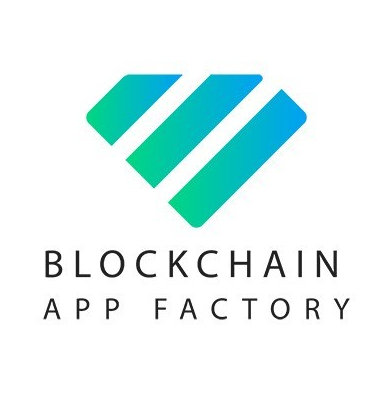
Service
NFT Game Development Services
Go to product
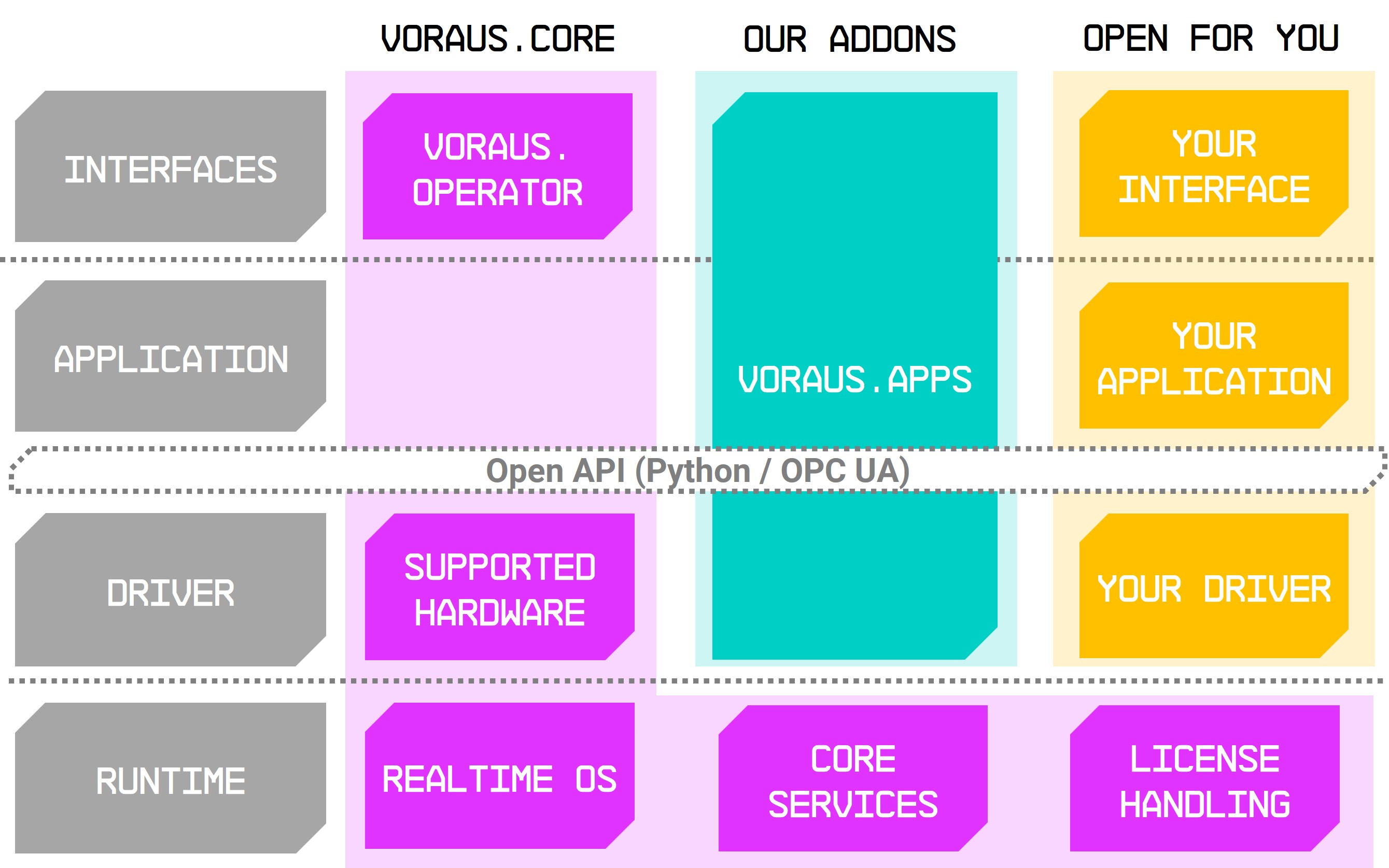
Product
voraus.core
Go to product

Service
OnPrintShop
Go to product

Product
edbic
Go to product
A selection of suitable use cases for products or services provided by verified companies according to your search.
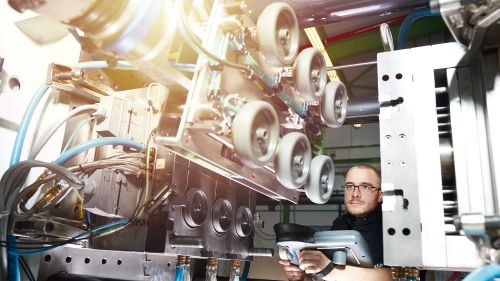
Use case
Continuous monitoring
Manufacturing
The challenge Blickle has always prided itself on the superior quality of its wheels and castors. To further enhance this quality with modern technology, the company decided to migrate its production processes to Industry 4.0 standards. This planned transition should have minimal impact on the three-shift production operation, while maintaining flexibility and openness for future digitalization initiatives. The solution Blickle IT developed a concept to enable a sustainable and gradual transformation. At the heart of the strategy is edbic, which enables condition monitoring. Acting as a central data hub, edbic seamlessly extracts data from the machines, transfers it to the ERP system and provides full production transparency. The result With the implementation of edbic, machine data no longer reaches IT incomplete or delayed. Immediate data analysis enables rapid problem resolution. Automatic punching presses are monitored to determine output results, missing parts, quantities and more. By eliminating most of the Excel lists previously used, edbic has significantly streamlined operations. In polyurethane production, edbic identifies and corrects problems, contributing to Blickle's high quality castors and wheels. In addition, edbic is now being used beyond production, facilitating connections to payment providers in the web shop and establishing a communication link with SAP. Outlook for the future Blickle plans to further refine the system by using machine data comparison for predictive maintenance. In addition, the company is considering implementing the compacer IoT gateway to take communication between machines and the ERP system to a new level of automation.
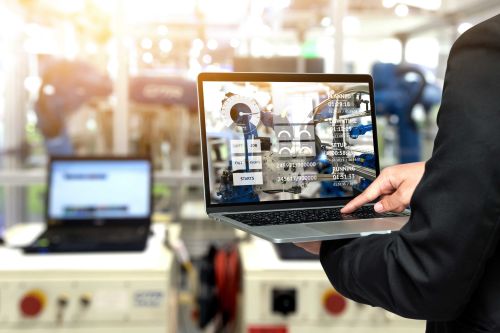
Use case
IoT gateway and Industry 4.0 application
Industry 4.0, Manufacturing
The challenge: BURKHARDT+WEBER is renowned for its expertise in large machining centres. Headquartered in Reutlingen, Germany, the company has a global presence and supplies its products to customers around the world who place a premium on quality. For 130 years, BURKHARDT+WEBER has focused on developing state-of-the-art production solutions for the demanding machining of steel, cast iron and titanium components. The development of these machining centres is the collaborative work of interdisciplinary teams, and all essential components, as well as in-house developments, are manufactured within the company. The compacer IoT solution, built on the edbic platform, is planned for future integration into BURKHARDT+WEBER machining centres. The installation of the compacer IoT gateway enables data collection from the machine's control system. In the long term, BURKHARDT+WEBER machines will offer a wide range of data that can be examined in real time to provide a detailed overview of the machine's condition and efficiency on a dashboard. The solution: An IoT hub will process the collected data, enabling a variety of assessments and ensuring that the operator is kept informed at all times. With machines connected to the compactor solution, condition monitoring is possible, paving the way for the implementation of predictive maintenance. With this approach, BURKHARDT+WEBER enables its customers to successfully implement upcoming digital transformation projects within their production processes.
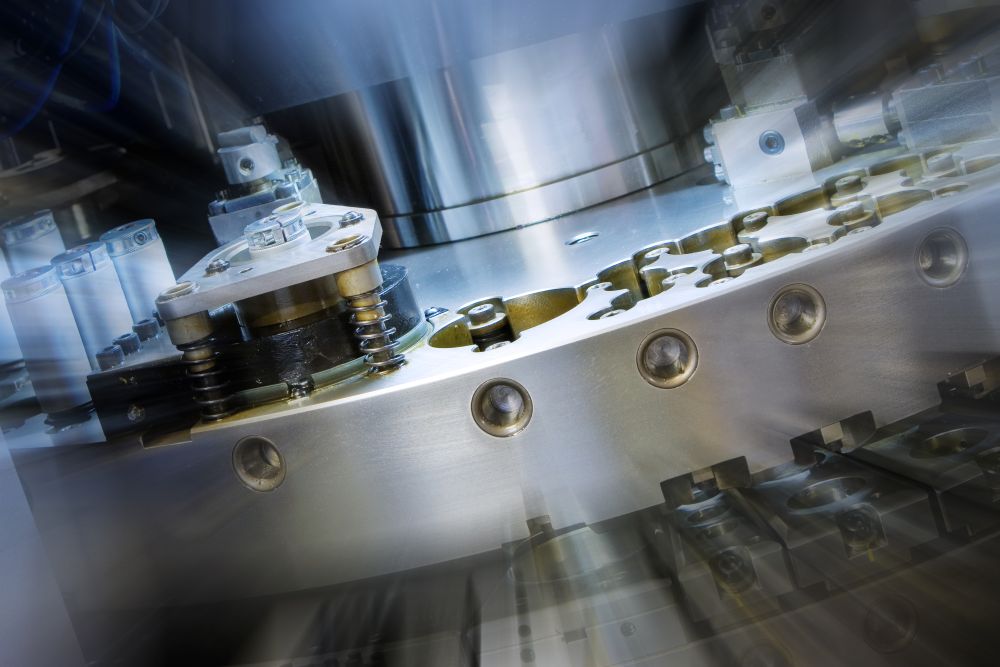
Use case
Digital retrofit at a manufacturer
Electrical installation technology
The challenge: Our customer has an individually analog 30t punching and bending machine in use, which must not be interfered with in the control process. Small hairline cracks in the large drive wheel can lead to a machine failure, resulting in a production stop. Due to the high storage costs, the spare part is not kept in stock. It can take up to three weeks to order and deliver the new part. In order to avoid a machine breakdown, it should be digitally connected to the current production environment and in future the condition of the gearwheel should be analyzed by means of condition monitoring and a breakage better predicted. Our customer's goal was therefore to make the machine IoT-ready with a digital retrofit in order to reduce machine downtimes and increase machine utilization times. The solution: Digital activation of the existing system was unavoidable, which is why sensors were initially installed by the customer to detect the gear breakage. The vBox from Fraunhofer IPT processes the sensor signals and sends the data to the compacer data platform edbic. Among other things, structure-borne noise, vibration, temperature, torque and current are measured. Increased current consumption, which can be a sign of excessive load due to friction and a lack of lubricant, is detected. However, the collected and evaluated data also reveals smaller cracks. The frequency spectrum and other values are recorded, compared and examined for outliers in real time. If an outlier, such as a crack, is detected, an alarm is generated and employees are informed. They can take action if necessary and production downtime can be avoided. Our customer: a German market leader in the field of electrical installation technology and global market leader in SCHUKO® sockets, produces at two locations in Germany and exports to more than 60 countries. In order to further expand its brand leadership and establish innovations in the smart home sector, the company is taking on new digital challenges.
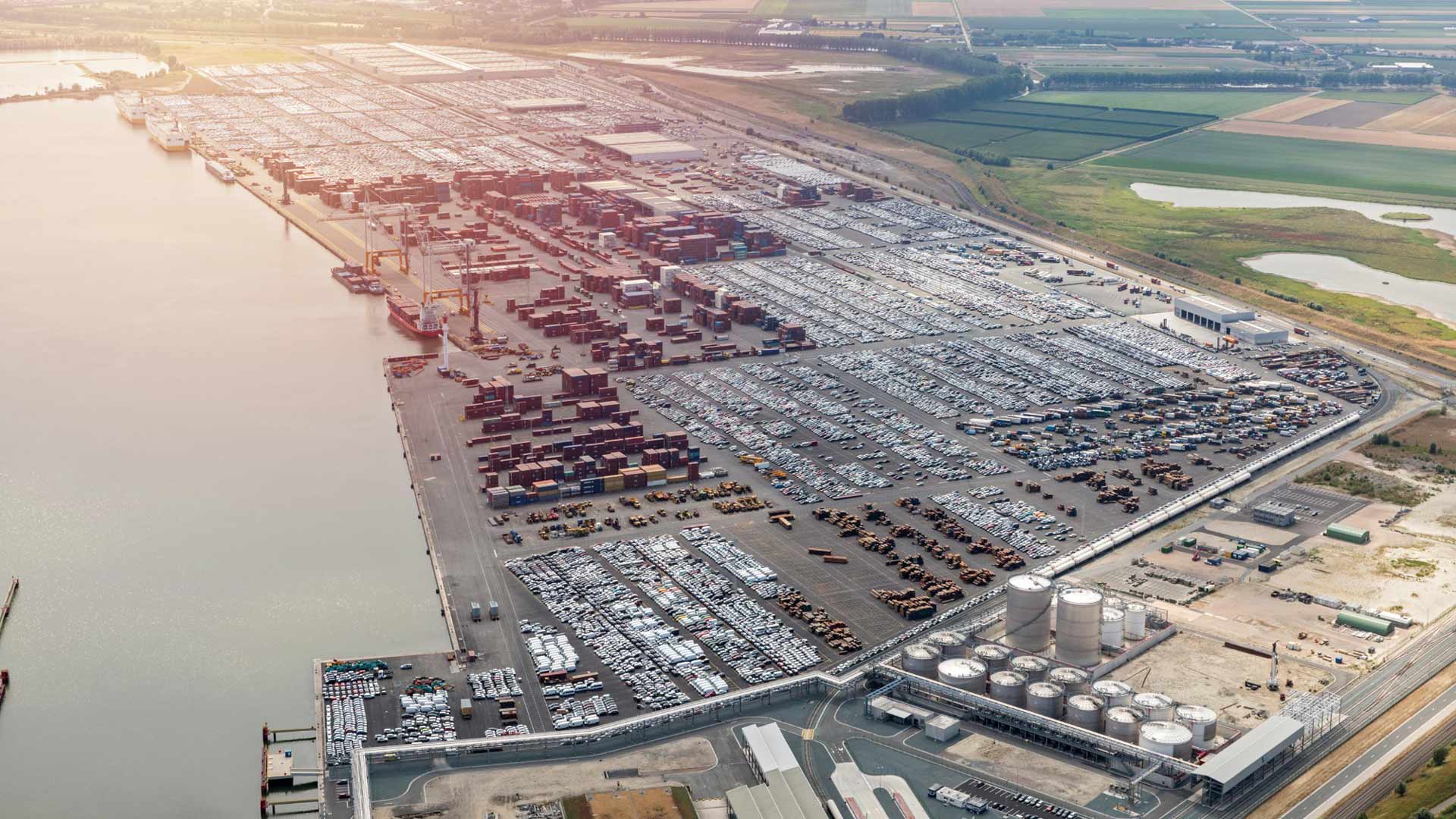
Use case
Business and IoT integration in Antwerp Euroterminal
Ports
The challenge: The implementation of a new Terminal Operating System (TOS) offered our customer the unique opportunity to rethink the entire IT landscape. Accelerating the digital transformation and reducing the workload became key target definitions. The aim was to meet the ever-changing internal and customer requirements, while offering high-quality services to end customers. The most important factors were maintaining a high level of customer satisfaction and a clear commitment to maximum security. The existing system landscape had grown with the company and was therefore very heterogeneous and poorly integrated. This had led to high maintenance and administration costs. Integration projects were only implemented when necessary and integration problems were solved by in-house developments. This led to silo thinking and resulted in increasingly fragmented and isolated knowledge. It became clear that networking the respective systems with suitable tools would create immediate added value and greater transparency. In addition to the "classic" challenges of integration projects, our customer emphasized that the topic of IoT integration was very important to them. Particular attention should be paid to finding the right speed and the right tools for the changeover. A software platform that would enable them to connect their B2B partners and their applications electronically and provide a solid basis for the planned IoT integration would therefore be far ahead of all competing offerings. The solution: The customer decided to use the compacer edbic platform as a B2B/IoT gateway. The integration platform acts as a central "data hub" for our customer and the applications of its trading partners. It has since become the core of all operational and logistical flows. edbic was supplemented in a second step by edpem to introduce business process monitoring (BPM). A whole series of integration projects were implemented in a very short space of time. Some of these were "traditional" B2B projects designed to enable the exchange of EDI, XML and proprietary data with the applications of trading partners and third parties by converting and transmitting the data transparently. In addition, a large number of applications were connected via edbic. The system for shift planning and management of terminal workers was linked to the access control system for the port, enabling automated payroll and significantly relieving the HR department of day-to-day tasks. Integration with the customer's ERP environment, on the other hand, partially automated order acceptance, fulfillment and billing. New capabilities were also added, such as the generation of data records for structured test scenarios, automated access control based on shift planning and visitor appointments, and much more. However, the port operator wanted to go one step further and tackle its first IoT project. For the pilot project, sensor data from the terminal's various weighing and measuring systems was published via edbic. A typical use case is measuring the verified gross mass (VGM) to comply with SOLAS requirements. The data obtained is now automatically fed into higher-level systems such as the TOS or stowage planning for loading ships, where it is available for further processing, analysis and visualization. The network of surveillance cameras has been connected to a perimeter security system, which enables the early detection of intruders. The comparison of number recognition events (ANPR) with access control information and TOS transactions makes anomalies visible, improves traffic management and increases security - a key concern in port terminals. All of this is controlled by edbic. This new level of digitalization makes everyday terminal logistics easier and significantly increases the efficiency of the port.

Use case
EDI in electronics wholesale
Wholesale
The challenge: Due to a lack of transparency in communication, there are always gaps in the transfer of know-how between the active shareholders. A standardized communication structure between customers and business partners must therefore be established. Among other things, this should also contain information on delivery information and ensure greater transparency within the business processes. One challenge, for example, was the lack of visibility of goods availability, which needed to be resolved. The solution: In addition to establishing central IT services, the aim was to create a modern communication concept for Europe-wide business processes using EDI so that all shareholders in Europe can access all data in a shared database. compacer was commissioned to develop, set up and operate a fully integrated B2B industry platform for the group of companies. In addition to the EDI component with integrated supplier onboarding portal, this was also to cover the topic of e-invoicing. An e-invoicing platform was to be established that implements e-billing, signed PDF, e-mail distribution and ZUGFeRD in practice. Our customer: is a market community in electrical wholesale and a group of companies that operates internationally in 26 countries. More than 230 independently cooperating electrical wholesalers now belong to the association. Almost every shareholder is an independent family business. The aim is to strengthen the future of wholesalers. That is why the company's focus is also on cooperation with the individual manufacturers. This is also the reason why a central e-commerce platform had to be set up and expanded.

Use case
Automation
All
Here we are talking about automation, what google calls toil, annoying repetitive tasks that eat up your time preventing you from focusing on what matters. Software engineering can help you automate these tasks and focus. You can sleep well at night knowing you will not be disturb since you have implemented automation with the support of Clair Services.

Use case
Talleys
Food, Beverage
Working with our Italian partner Automha and local Racking Partner StorePro, PHS Innovate’s scope included all the racking, automation equipment and conveyors in and surrounding the Cool store. The system scans wrapped and labelled pallets and communicates with Talley’s inventory system to retrieve details for the pallet. The system then stores the pallets in rack locations based on Batch and date for optimised future retrieval. When a truck or container load is needed, Talley’s inventory system communicates with our automated handling system to request specific pallets. Our solution then retrieves and delivers the requested pallets to a designated area for the forklift driver to load into the truck or container.
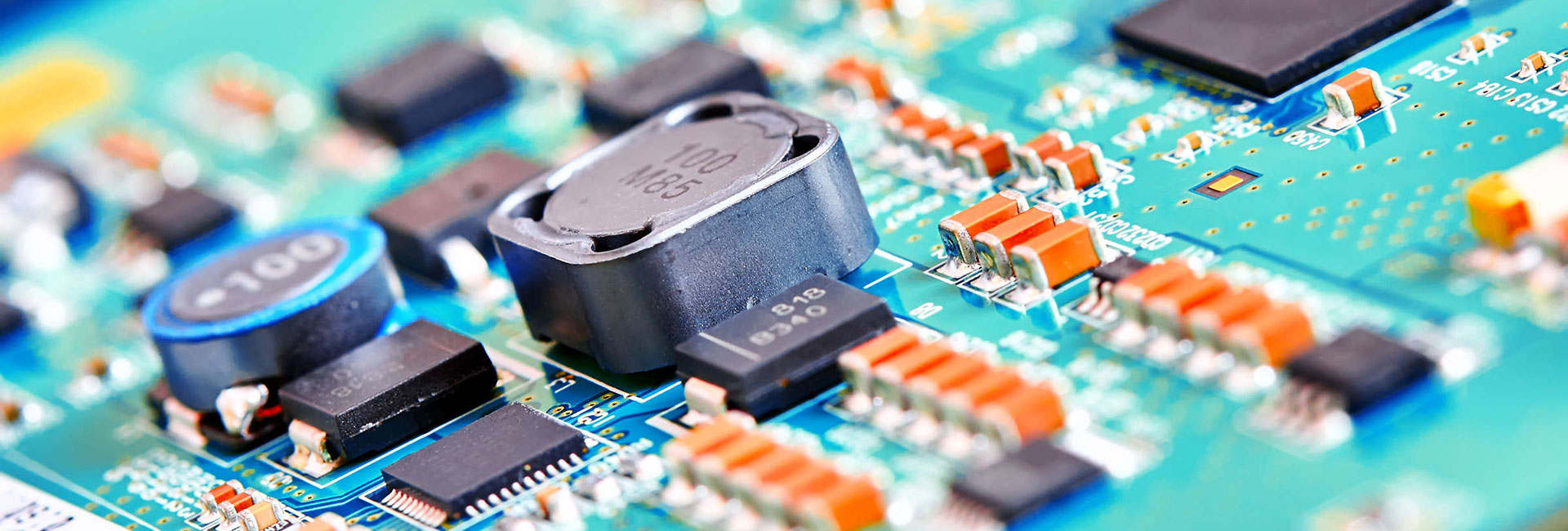
Use case
Custom Electronic Design
automotive, E-mobility, automation, industrial automation, machinery, industrial machinery, smart industry, industry 4.0
Electronic design frameworks Electronic design starts from the component layout specification. Also, it consists in the definition of interconnections and PCB technology. Finally, component selection is formalized (BOM, Bill of Material), such as the circuit schematics and the layout of PCB traces (gerber file). If the Electronc Systems is composed of multiple circuit boards, electronic design includes the description of the interconnection schemes, and the instructions for the wiring manufacturing. Adgenera develops electronic circuits tailored and suitable for any application. It selects the most valuable technology for the peculiar field of application, in order to ensure the maximum reliability. Electronic design frameworks Custom-designed electronic solutions can be found in many sectors, covering various fields of application and meeting Client needs. The most frequent requests are: design “from the scratch” miniaturization of an existing circuit board cost Reduction electronic board update, when components are no longer available engineering a prototypal board, either partially or completely working functional improvement (for example, adding a wireless interface) performance improvement (for example, power consumption reduction) Other elements increase the complexity of the electronic design: legacy firmware for the previous version of board need for a custom / legacy interface to other electronic existing systems availability of the components on the market within a certain amount of time project constraints due to standards or certifications The steps of the Electronic Design Electronic design aims to respond to the request of designing and producing electronic circuit boards. First, the customer is interviewed on the characteristics of the electronic system to be designed.. The customer is actively involved to identify the best design choices. This preliminary phase leads to the correct identification of development times and costs, allowing the customer to verify the compliance with his needs and to create a preliminary project planning. Now the electronic scheme can be designed. Specific skills of our designers are applied to correctly select and size the components. Once the scheme has been designed, the electronic components available on the market are selected. Then, they will be soldered to the electronic board during its production phase. We select the most suitable package of components depending on the layout, the space available and the type of application. This design phase leads a draft of the BOM (Bills of Materials) necessary to supply and solder the right components. The electronic components chosen are placed on the board surface. Their positions strictly match design constraints principles to guarantee the correct functioning of the electronic system. Usually several alternative arrangements are evaluated. Finally, the chosen one is the one that leads to the best result once the electronic card is produced. Once the components are finally placed in the board, it is necessary to draw the connections (tracks) that appropriately connect the pins of the components themselves. The tracks design needs to follow many rules and best practices: although there are infinite ways to connect the chosen components, only a few solutions guarantee a good quality card. The preliminary electronic design project is ready: the first board samples are created to check the functionality and performance of the designed electronic system in the laboratory. During the tests, the laboratory instrumentation verifies that each quantity measurable on the card corresponds to the value theoretically calculated during the electronic scheme design.
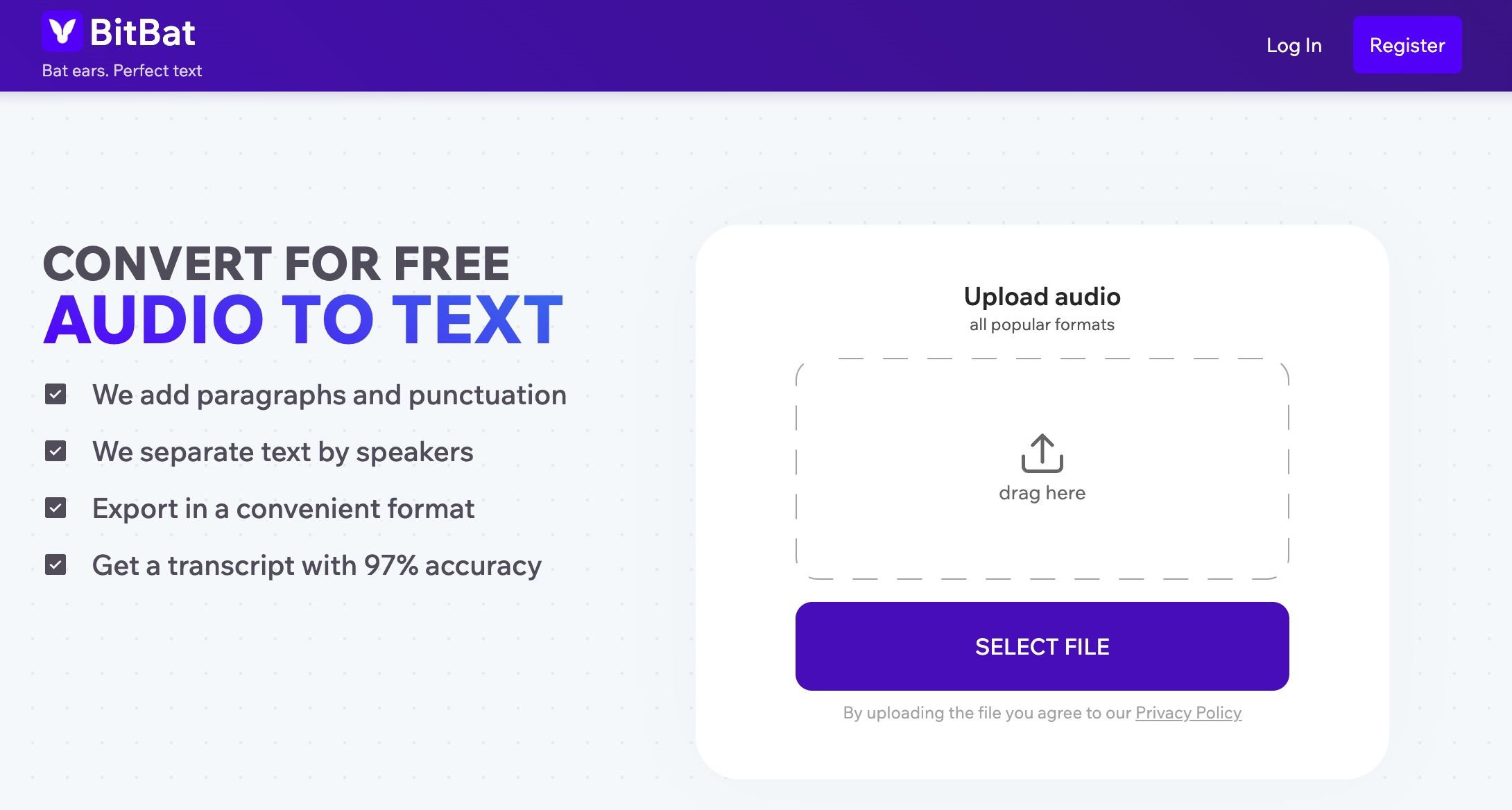
Use case
Bitbat for Journalists
journalists
Journalistic Interviews: Effortlessly convert recorded interviews into text, facilitating quicker content analysis and story development. Content Creation: Transcribe podcasts, webinars, and other audio content to create accessible text versions for diverse audiences. Academic Research: Transform lecture recordings and discussions into text for easier review and citation. Market Research: Transcribe focus group sessions and consumer interviews to extract valuable insights efficiently.
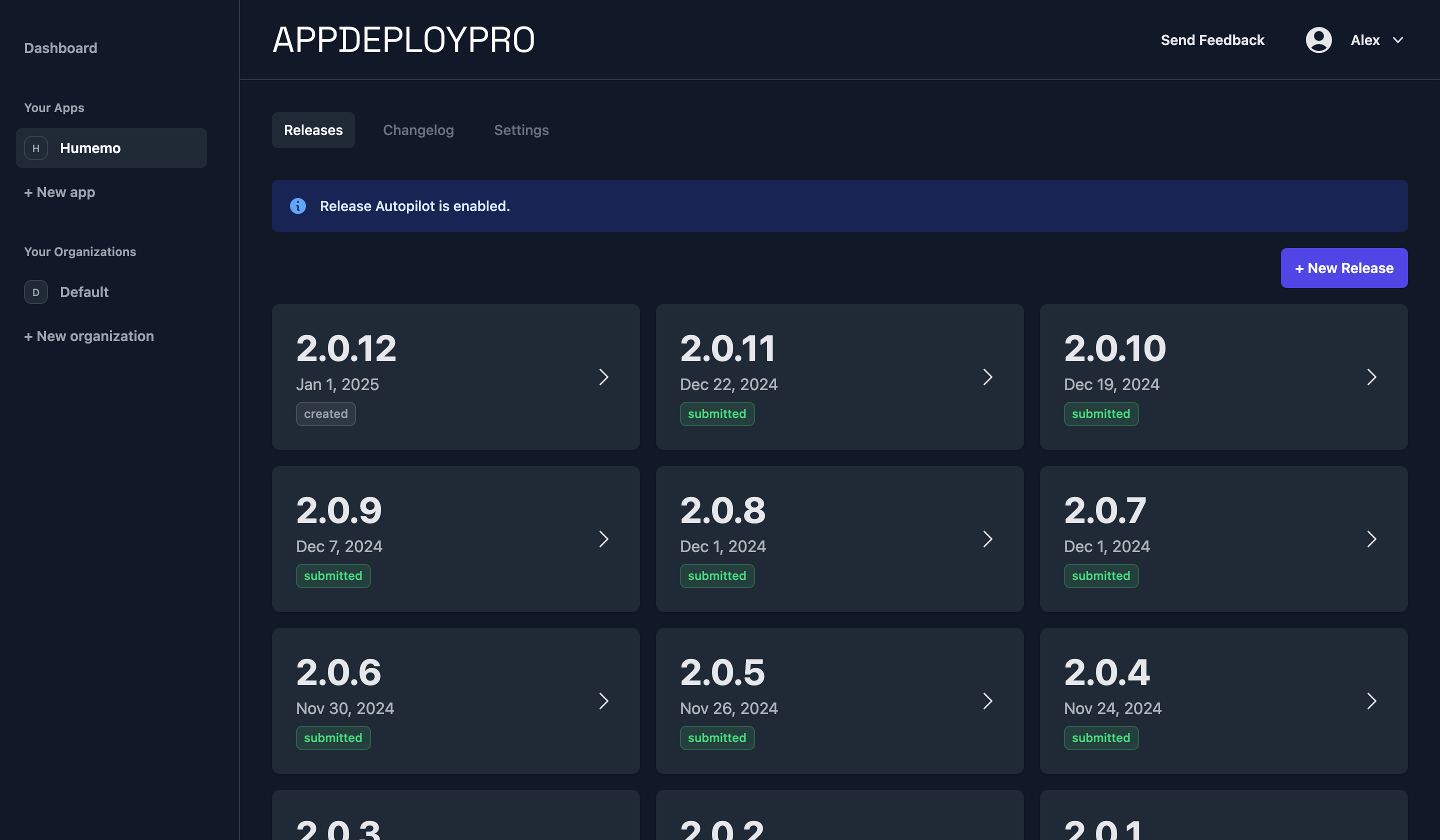
Use case
AppDeployPro for Mobile App Release Management
Automation, Software
AppDeployPro streamlines the mobile app deployment process, helping developers easily release their applications by automating submissions to the Google Play Store, with expansion plans for the Apple App Store. The platform offers an intuitive user interface paired with developer-friendly APIs, Release Autopilot for setting up release cadences automatically, and seamless GitHub integration for build management and upload automation. By significantly reducing manual tasks involved in app store submissions, AppDeployPro allows developers to prioritize coding efforts over administrative release tasks. Designed especially for mobile engineers, it tracks app release versions efficiently through an integrated changelog, ensuring transparency and historical visibility of app iterations.
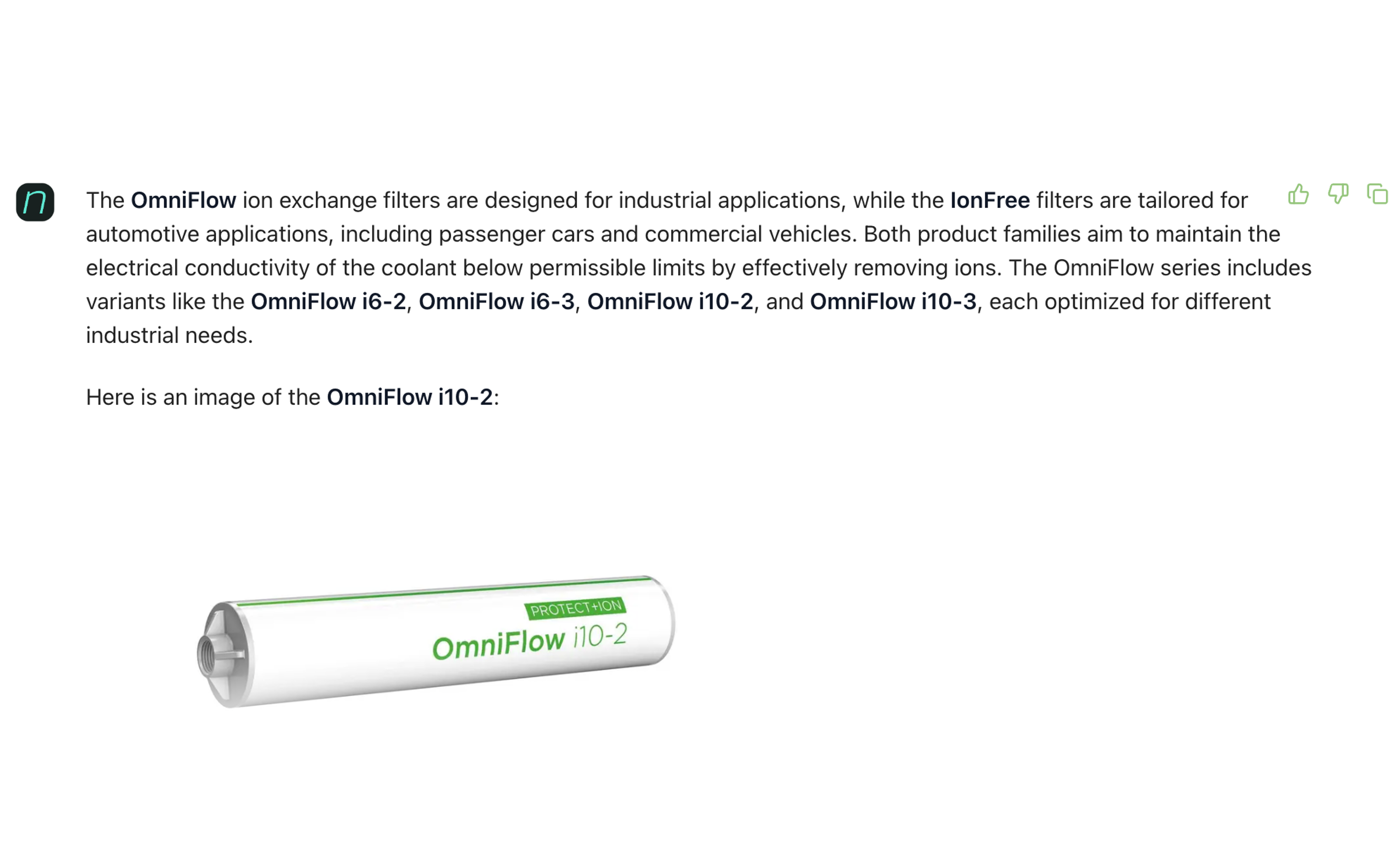
Use case
Product Wizard for Online Shop
Machinery & Equipment Manufacturing, Medical Equipment Manufacturing, Specialized Manufacturing, Industrial Component Manufacturing, Materials Manufacturing
Our AI agent can seamlessly integrate into existing online shops through simple website and email integration, requiring minimal IT resources while preserving existing sales processes. It enables customers to self-navigate complex product selection directly through your shop interface, automatically generating qualified quotes based on documented requirements. This implementation reduces transaction costs by 60%, delivers qualified responses in minutes instead of days, and creates 20% additional capacity by automating repetitive tasks, allowing your sales engineers to focus on high-value activities.

Use case
Continuous monitoring
Manufacturing
The challenge Blickle has always prided itself on the superior quality of its wheels and castors. To further enhance this quality with modern technology, the company decided to migrate its production processes to Industry 4.0 standards. This planned transition should have minimal impact on the three-shift production operation, while maintaining flexibility and openness for future digitalization initiatives. The solution Blickle IT developed a concept to enable a sustainable and gradual transformation. At the heart of the strategy is edbic, which enables condition monitoring. Acting as a central data hub, edbic seamlessly extracts data from the machines, transfers it to the ERP system and provides full production transparency. The result With the implementation of edbic, machine data no longer reaches IT incomplete or delayed. Immediate data analysis enables rapid problem resolution. Automatic punching presses are monitored to determine output results, missing parts, quantities and more. By eliminating most of the Excel lists previously used, edbic has significantly streamlined operations. In polyurethane production, edbic identifies and corrects problems, contributing to Blickle's high quality castors and wheels. In addition, edbic is now being used beyond production, facilitating connections to payment providers in the web shop and establishing a communication link with SAP. Outlook for the future Blickle plans to further refine the system by using machine data comparison for predictive maintenance. In addition, the company is considering implementing the compacer IoT gateway to take communication between machines and the ERP system to a new level of automation.
When exploring the Automation Software industry in Norway, several key factors warrant attention. Norway's commitment to sustainability and environmental concerns shapes the regulatory landscape, often leading to strict compliance requirements for automation solutions that minimize ecological impact. The industry is characterized by robust government support for technological innovation, providing opportunities for companies focused on energy efficiency and smart automation in sectors like oil, gas, and renewable energy. Challenges include navigating a competitive market with established players and emerging startups, necessitating a strong value proposition for new entrants. Additionally, cultural factors and a skilled workforce contribute to the unique operational dynamics within Norway, influencing how companies approach automation solutions. The global market relevance of Norwegian automation software is underscored by its emphasis on high-quality standards and advanced technology, making it a competitive player in international markets. Networking within industry associations and attending relevant trade shows can provide insights into market trends and potential partnerships. Understanding local customer needs and preferences is vital for tailoring solutions effectively. Overall, a thorough grasp of regulatory frameworks, market dynamics, and sustainability goals will be crucial for anyone considering involvement in Norway's automation software sector.
Some interesting numbers and facts about your company results for Automation Software
| Country with most fitting companies | Norway |
| Amount of fitting manufacturers | 40 |
| Amount of suitable service providers | 24 |
| Average amount of employees | 11-50 |
| Oldest suiting company | 1984 |
| Youngest suiting company | 2019 |
Some interesting questions that has been asked about the results you have just received for Automation Software
What are related technologies to Automation Software?
Based on our calculations related technologies to Automation Software are Big Data, E-Health, Retail Tech, Artificial Intelligence & Machine Learning, E-Commerce
Which industries are mostly working on Automation Software?
The most represented industries which are working in Automation Software are IT, Software and Services, Other, Automation, Marketing Services, Oil, Energy and Gas
How does ensun find these Automation Software Companies?
ensun uses an advanced search and ranking system capable of sifting through millions of companies and hundreds of millions of products and services to identify suitable matches. This is achieved by leveraging cutting-edge technologies, including Artificial Intelligence.